An introduction to time travel machines

Time travel occurs naturally, just read this little abstract and you will notice that some time has passed in the meantime. Waiting is cheap but not very productive.
If we want to be a bit more sophisticated we should board a spaceship and head for the Sun, we then bask in its warm light for few months around its orbit and when we come back on Earth we find out that the earthlings are a few minutes older than ourselves depending on the length of our trip and the radius of our orbit around the Sun.
Now this time travel machine is very expensive and the time gain is not great, so let’s try something a bit more efficient.
We take the same ship we used to go around the Sun, we beef up its frame and we flung ourselves toward the event horizon of a black hole.
As we glide over it we must be careful not to get sucked into it, or we will never be able to get out, not even light, with its lofty speed can escape it once it is sucked into it.
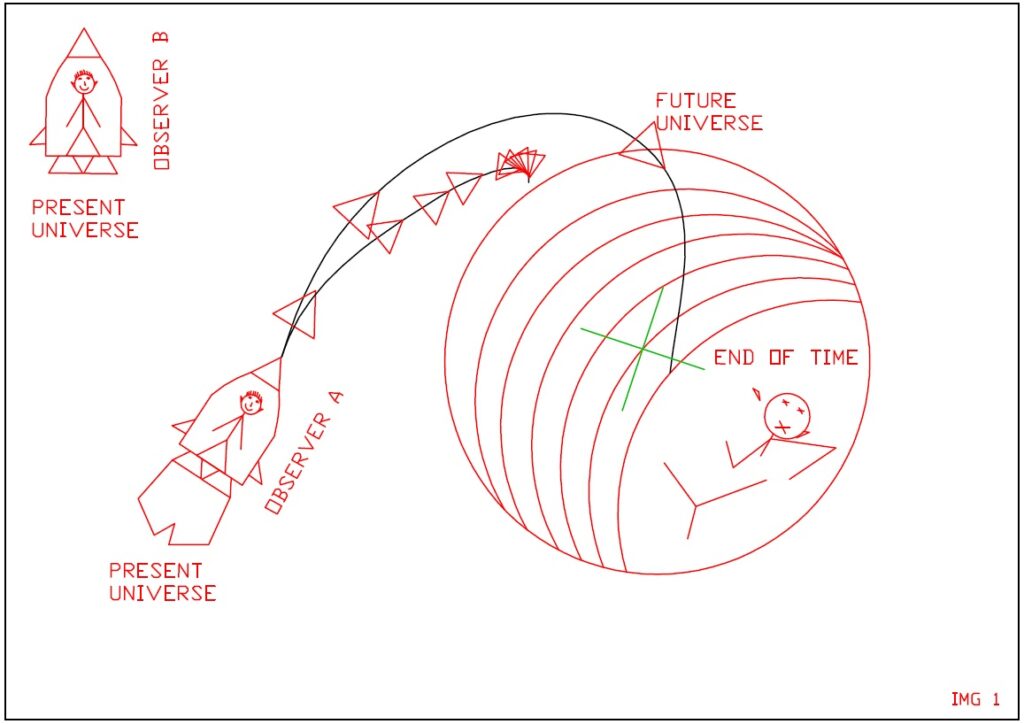
If you fall in it you could say that you are moving so fast into the future that you have reached “the end of time”, but you will no longer be able to tell the tale at that point, not as a live human anyway.
As we carefully sling shot around the black hole we will look back at the rest of the universe around us and we will notice that it is moving forward in time at incredibly high speed depending on how close we glide over the event horizon.
We will be seeing our universe quickly moving into its future self, and the moment we leave the orbit around the black hole, is the moment we drop back into the future version of our universe of origin and we move back to our original time pace.
Now this is not just expensive, it is also incredibly dangerous, but the time gain is pretty darn good!
Again in this last case there are some slight technical and scientific hurdles such as: How do we build such an advanced space ship, and where is the closest black hole to our Solar system, and how do we travel fast enough to get there and back, can the ship resist the extreme mechanical and gravitational stress nearby the event horizon…
Another problem of this machine is also that it can’t yield negative time gains (traveling to the past), and in order to overcome these issues we must use tiny black holes also called microsingularities.
The smallest black hole in town
We tend to imagine black holes like enormous galactic objects with a huge mass, but few can imagine a black hole the size of an electron.
To be a black hole you don’t need to have a huge mass, only a critical density, so if you could squeeze the mass of a proton into the volume of an electron, there you would have a lightweight electron size black hole!
The problem with this little black hole: Hawking radiation flashout.
Let’s just say that a black hole isn’t entirely “black” which is it emits radiation out to the outer space like a black body. When it emits radiation it is also losing out mass (weight) as a reverse function of the radius of its event horizon.
If you are a very massive black hole with a very large event horizon radius, then you are emitting a very faint infrared radiation, so you are losing out mass (light) to the rest of the universe at a very slow rate and it will take billions of years to slim down and re-emit all your mass out as radiation back to the universe, and this is assuming no more mass is falling into the black hole to compensate the mass loss through infrared emission.
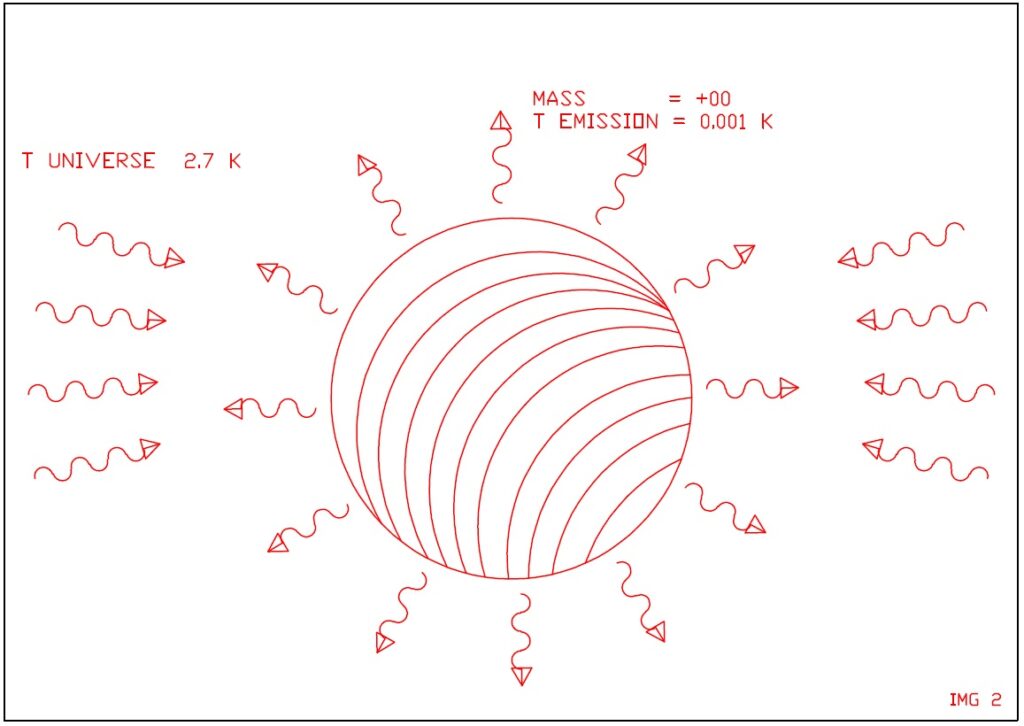
On the other end of the spectrum, if you are a super small black hole or microsingularity, then your event horizon radius is in the millimetres/picometers, so you are emitting out a very intense electromagnetic radiation (in the gamma ray spectrum), and you are also losing a lot of mass through this electromagnetic emission, and the smaller you get, the faster you emit radiation out, so you keep getting smaller and smaller, brighter and brighter, and before you know it, your mass is ZERO and you are no more.
Our microsingularity is then very short lived, as soon as it comes into existence, it flashes out all its mass in a runaway burst of gamma ray AKA Hawking radiation and it is literally GONE in a fraction of second.
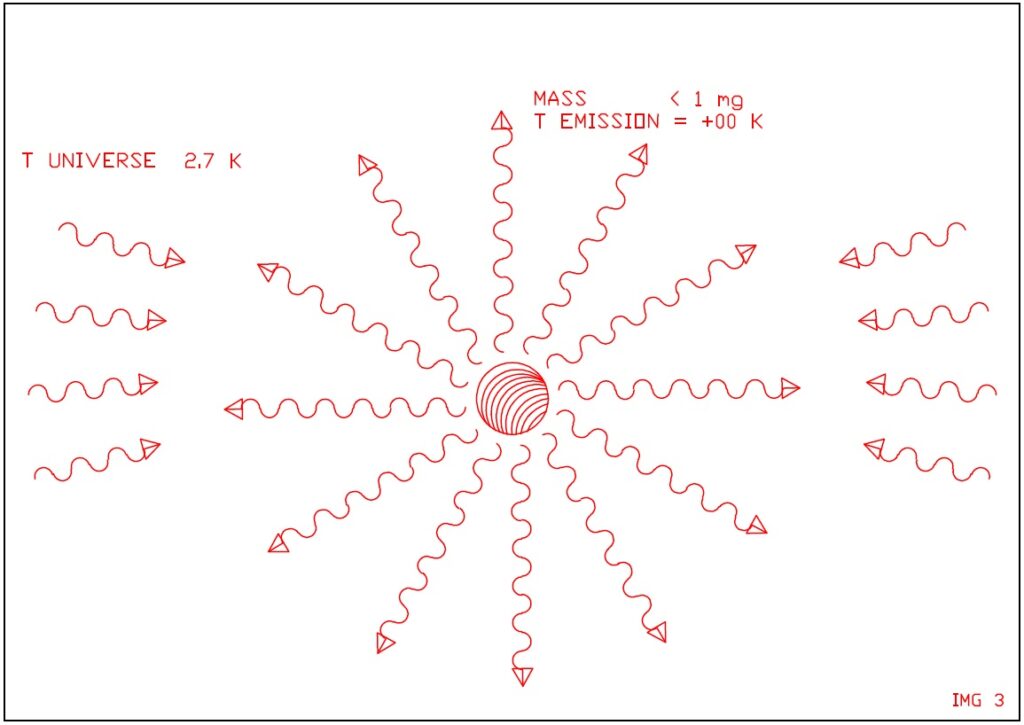
Stabilizing a microsingularity is one of the most difficult feat to master time travel. You want to consider an array of microsingularities each in dynamic electro magnetic equilibrium with each other.
Alternatively you can use electric fields to craft gravitational fields in the shape and intensity you like. Bear in mind the time gain Tg is a function of the g vector in a given point TIMES the inverse of the radius (positive for convex or negative for concave type gravity functions). Since the g vector is limited by the stress a human body can take during the time displacement, the main parameter to control the time gain Tg is the radius of the gravitational field the time displacement device is exposed to.
Fooling around with prototypes
Now that we have a stable microsingularity (or a multitude of them living together in a dynamic equilibrium), lets manipulate them a bit.
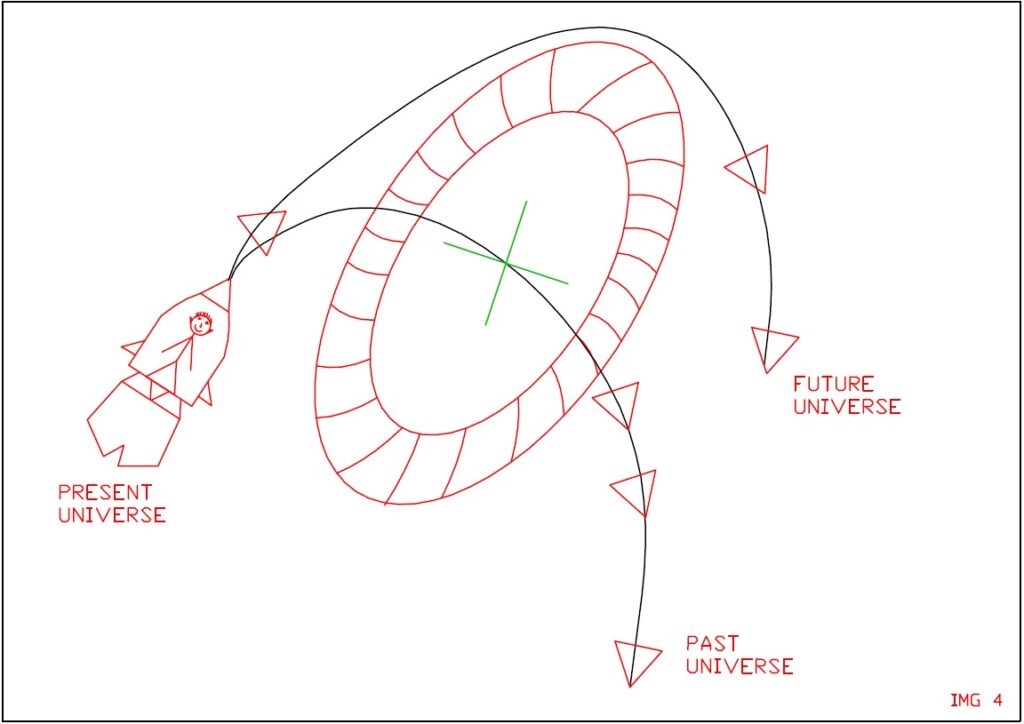
Firstly, we inject mass into their event horizon with a certain angular moment so to cause the event horizon to spin and flatten like an elliptic. Secondly, we electrically charge the microsingularity by injecting only electrons (or protons) into it, so our elliptic sphere event horizon will shape more and more like a doughnut.
Now our event horizon has an outer rim where the g vector curvature radius is positive, if you slingshot your time travel machine around it you will emerge into the universe’s future.
The inner part of the doughnut has a negative curvature, if you pass nearby this gravitational sinkhole you are going toward the universe’s past, which causes quite a few paradoxes we will clear out soon enough.
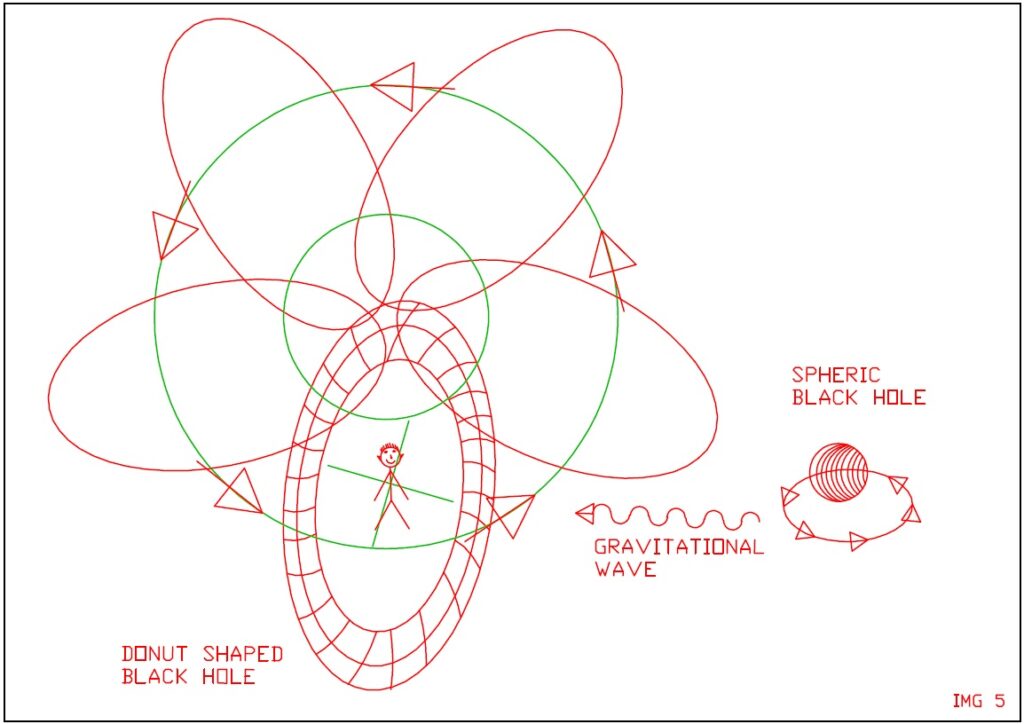
Bottom line is that time travel machines will feat microsingularities, and these will be manipulated in order to craft a gravitational field in such a way to simulate the outer edge of a black hole surrounding a certain payload-volume (trip to the future) or even simulate the gravitational profile of the inner edge of a doughnut shaped black hole (trip to the past).
An interesting anecdote when the first-time travel machines will be built is that these first prototypes will be programmed to go back or forward in time for just few seconds and then come back again.
They were packed with all sorts of instruments and live feed sensors and… they never came back!
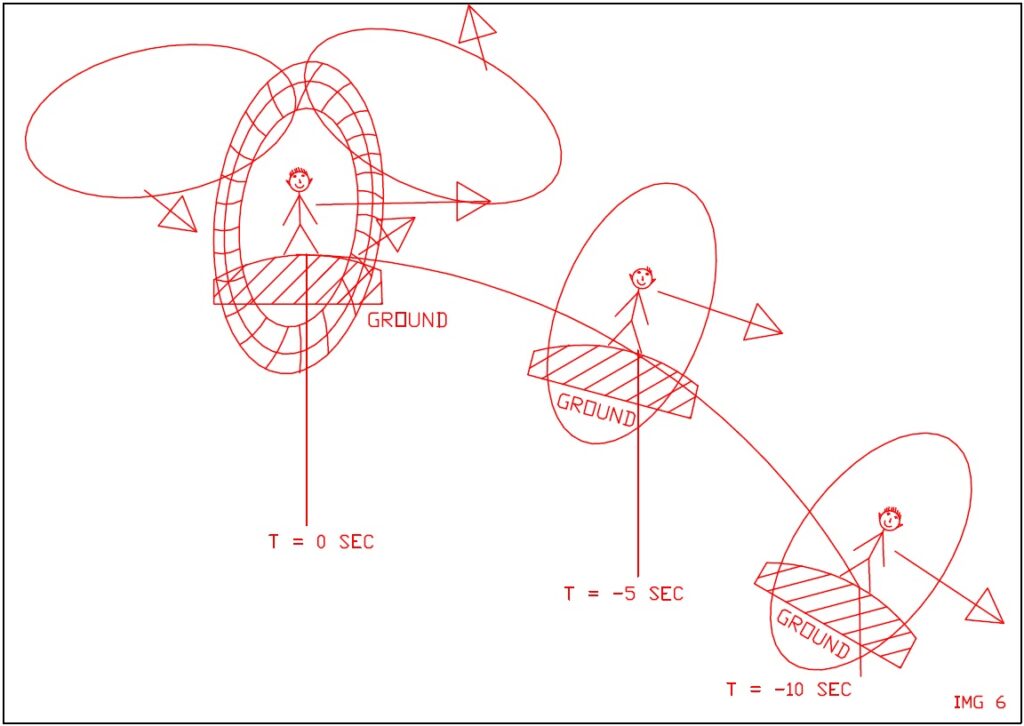
As it turned out, some of them where ultimately projected outside the Earth atmosphere and eventually found in orbit to transmit their status and position, the unlucky ones appeared in the middle of the Earth crust or mantel and they where never recovered, only minor faint earthquakes were detected as a trace of their sudden end.
This because as the machine was static in the same gravitational spot, the rest of the planet Earth and Solar system was eventually moving out and around the probe.
So how do we keep these machines “on the ground”? Since gravity is the only thing that the machine can manipulate and measure, gravity is the only compass available.
The probe would take a snapshot of the gravitational environment around it, then jump into a time travel mode whilst trying to maintain the same gravitational background around it.
If the gravity around the traveling probe is getting too light, it means it is drifting away from the Earth’s surface and it needs to manipulate the gravitational field of the black hole in such a direction to move back down where the background gravity is strong again.
If gravity is getting too “intense”, then maybe it is because it is in the middle of some solid rock, so it needs to re surface out back into the air where a lighter gravitational signature is detected once again.
Worldlines and multiverses
Assume a starting point in time and call this Big Bang (just for argument sake) intended as a common point in time from which all possible worldlines of a certain spacetime region originated.
From that common point in time many possible times and worldlines scattered into being. Some worldlines travel parallel to each other in the sense that they are very similar to ours, some very far and different from ours, in fact every possible worldline exists along with every possible choice we and everybody else could have made in their life.
If we consider our NOW moment as the year 2018, we would see that many 2018 years existing around our dimension/worldline, some are so similar to ours you wouldn’t even notice the difference, others are completely different, like the Red Sox are in a minor league, or worst like Trump being the president of the United States of America…
Regardless of the timeline you live in, you have to be careful that you do not lose your way and that you are always capable of getting back to your timeline of origin where people are waiting for you to come back home for supper.
In any case, the further in time you go, the more you add up measurement errors in your gravitational path, which means the harder it is to find your way back to your NOW of origin where people are waiting for you.
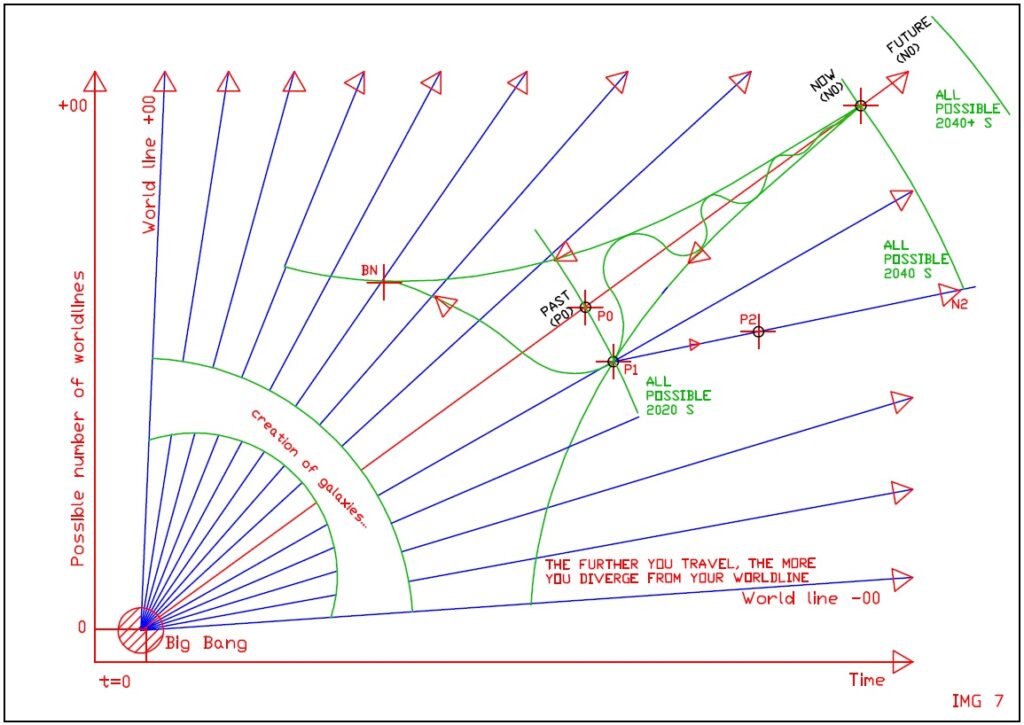
It is possible to travel back in time millions of years ago, but you won’t be able to find your way back to the point in time, the same place of origin, with the same people and historical events where you started the trip, it is called a one way trip in time.
Gravitational paths
We have seen already how you need to keep track of Earth’s gravity around you when you move in time, but the Earth’s gravity is not the only one influencing your time travel gravitational path, there is also the Sun, the Moon and other planets out there all influencing the gravity around the machine.
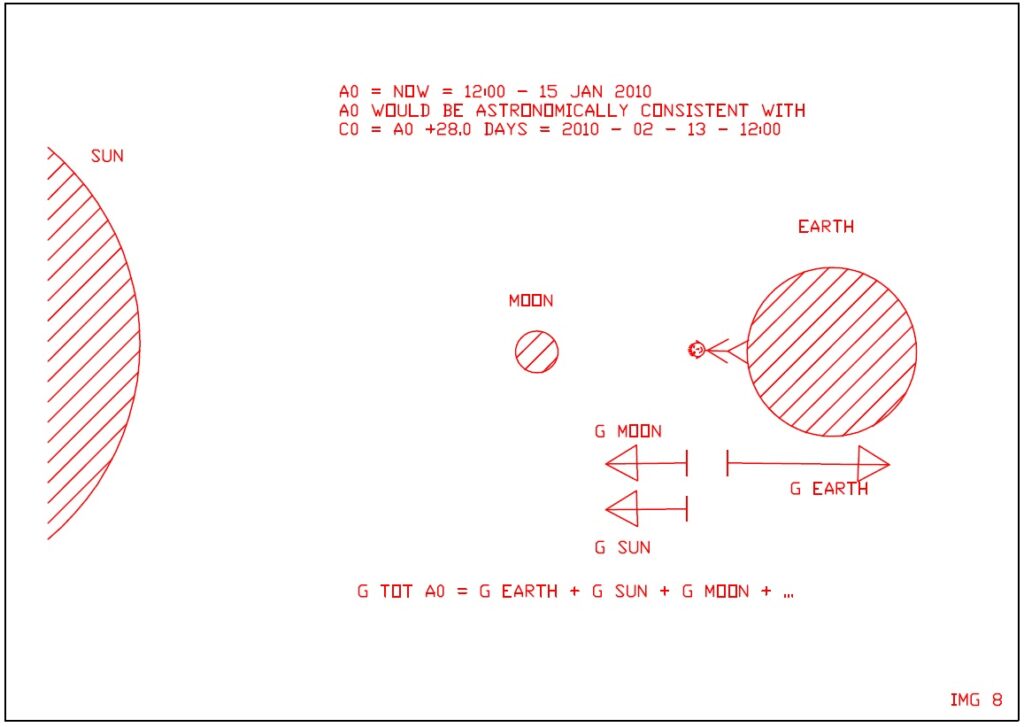
If you start your time travel trip when is New Moon, and you time travel 2 weeks away from that moment whilst locking in to a static gravitational snapshot of your surroundings then you will appear again on the surface of the Earth in a worldline where it is still New Moon but two weeks earlier than your worldline of origin.
Two weeks ago or in the future should feat a Full Moon, not a New Moon, so you have literally wandered into another dimension/worldline, which does not look anything like your past or future one of origin.
When you time travel you must not only consider the local gravitational image of your starting place, but also its evolution through time because of gravitational interferences of other planets.
It is not just a static gravitational snapshot that you need to keep track off, you must keep track of a complete gravitational path which is the same as the gravitational path your worldline starting spot underwent (in the past) or will undergo (in the future).
The Time Gain Tg of the time travel machine is measured in years per hour and this feature is usually different depending if you are moving in the past or in the future and depending on the capability of the proto-electron injection manifold to craft a stable gravitational field through the manipulation of microsingularities.
When time traveling, outside the machine it looks pretty dark, aside from occasional flashes of light and burst of energy from the microsingularities occasionally overheating or bursting whilst they find new equilibrium position as they are moved and manipulated so to craft the ideal gravitational shape and track of the right gravitational path.
Once you arrive in a past worldline through a correct gravitational path, everything will look exactly as it was historically remembered, apart from the fact that a time traveler has now barged into that worldline and has started to change things around. The mission of the time traveler could require a very light presence and interference, not to change or interact with anybody, or possibly require a much greater historical footprint on that worldline, John Titor style.
One step back, two steps forward
The following picture represents a roundtrip in time.
A time traveler comes from his NOW of origin N0 and goes pack to his past of origin P0. Because of said measurement and control errors he will not be able to get to his exact past of origin P0 but will miss it by just a little and land into P0* which is still almost undistinguishable from P0.
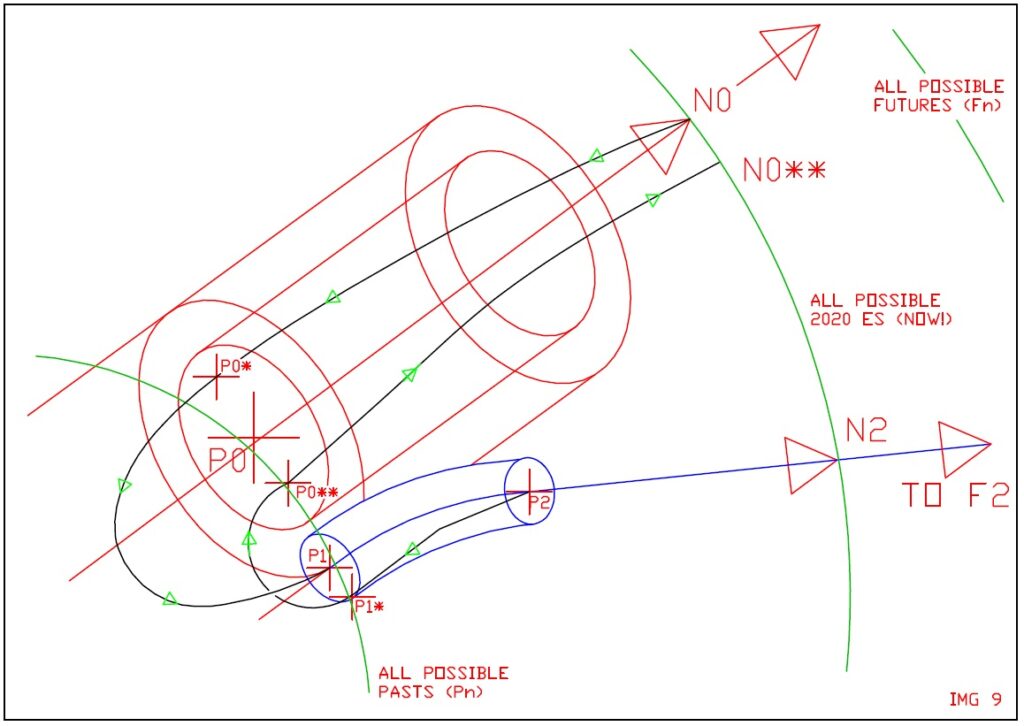
When he stops the gravity time displacement the time travel machine appears out of empty space, meaning that P0* is no longer consistent with P0 and is in fact a new worldline branch starting off P1.
The more the traveler interacts with things and people within the past worldline P1, the more this worldline will diverge historically from P0->N0->F0.
At some point in time, few hours or weeks from entry point P1, let’s call it P2 = P1 + 2 weeks (still in the past as seen from the now of origin N0), the traveler decides it is time to go back to his friends and family waiting for him in N0 back in the traveler future of origin. He could just hop into the time travel machine and fast forward to the future and into N0 but this will take him to a divergent future or NOW of origin N2 where things have been changed and no one might even know him (this what is likely to happen if you by chance happen to kill your father in his teens by mistake).
For the traveler to be able to get back to his NOW of origin N0 he needs to get back to the past moment where and when he first arrived, namely the past moment of entry P1.
Again he will miss it by a little because of measurement and control errors but it will be pretty close, namely P1*.
When in P1* he needs to lookup for a gravitational bump to detect a spot in spacetime where the time travel machine didn’t appear which is point P0** spacetime point which is consistent to P0* and P0.
From that point in spacetime he can fast forward to his future or NOW of origin N0. Because of the cumulative measurement and control errors he will not be able to land exactly into N0 but will instead appear into N0** which is close enough to where and when he first started his trip.
For an observer steady in N0 and watching you leaving in the time machine it will look as though you are disappearing and then re-appearing after a fraction of second, whilst for you time has passed (hours or weeks) depending on the length of your mission.
The naming conventions are N for the time of origin, also called N for NOW, P for PAST and F for FUTURE spacetime points.
Space exploration
Another interesting application for time travel machines is in space exploration programs.
In this case the time gain speed is set at the minimum pace of 1.0 YR/YR, so it is moving in time at the same time pace as everybody else.
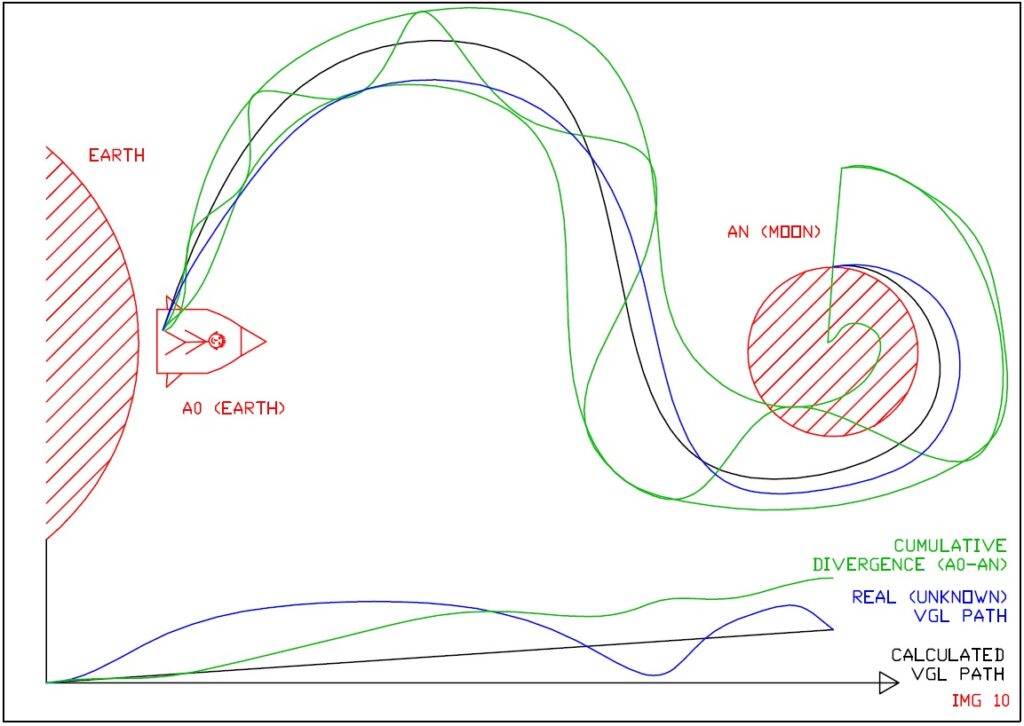
The interesting feat here is that we can still program a gravitational path so to move the machine toward other planets or galaxies as if it was a spaceship using some indirect form of black hole based gravitational propulsion.
Then in this case the machine will be seen like a fuzzy spot, continuously appearing and disappearing about in the same spot (or along a certain vector and direction).
This way of traveling is very expensive and complicate indeed as opposed to solid state electronic gravitational propulsion systems such as Biefeld Brown type devices.
